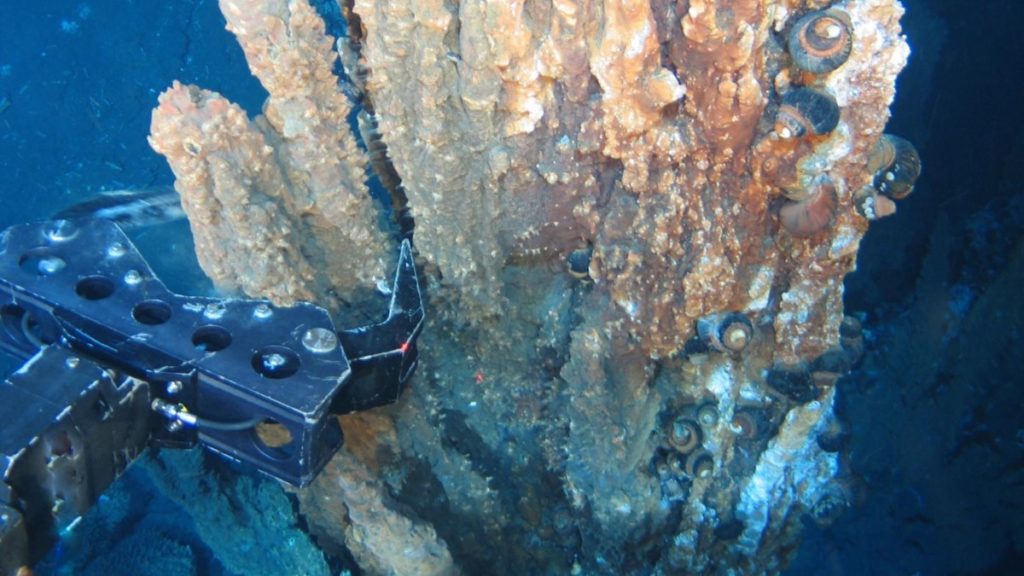The race for riches 20,000 leagues under the sea

Who will win the race for deep sea minerals?
- Dateline
- 6 April 2028
In the 1960s we had the space race, now we have a race for the minerals buried beneath the ocean floor. What some have dubbed ‘the race for the abyss’ is being led by China, North Korea, and a surprise joint-venture between the governments of Japan and South Korea, known as Pacifica Rare Earth.
Each nation is seeking to capitalize on the vast deposits of rare earth elements located near the Clipperton Fracture Zone in the Pacific Ocean. Although countries like Fiji, Papua New Guinea, and Tonga are thought to be closest to the mineral wealth, they have been unable to muster the capital needed to develop a viable deep sea mining outfit. As such, China, Pacifica Rare Earth, and North Korea are each taking their own unique approach to winning the mining rights.
Pacifica Rare Earth has taken a diplomatic approach, initiating talks to draw up an accord that would see the ‘host nations’ – islands closest to the Zone – benefiting from the mining efforts. The accord includes provisions for job creation in local economies, infrastructure development, and a revenue-sharing model that would see local governments reap a share of the profits from the mining operations.
Meanwhile North Korea has taken a more aggressive approach, seeking ‘non-diplomatic routes’ to secure the rights and is considering its military options. This has caused significant concern from neighbouring countries, NATO, and the UN alike, leading to increased tensions in the region.
China, on the other hand has offered to upgrade the host nations’ aging infrastructure and repair the damage caused by the severe storms, volcanic eruptions, and underwater earthquakes that – thanks to climate change – have ramped up in recent years. The offer has been well received by the islanders as it provides a valuable boost to their infrastructure development goals, but it would give the Chinese government the right to mine the area “in perpetuity without limit or restriction,” and seemingly without concern for the environmental impact. This has raised red flags with the UN’s International Seabed Authority, the body responsible for the granting of deep sea licenses.
Deep seabed mining was made possible (and profitable) by recent advances in robotics and autonomous systems, enabling the operation of mining equipment at depths of 6,000+ metres. Despite the technology being viable several years ago, certain regulatory frameworks were needed to ensure operations would be conducted in an environmentally and socially responsible manner, with strict guidelines for the protection of deep sea ecosystems and the rights of local communities.
With those frameworks now in place, several important questions are on everyone’s mind. Who will emerge victorious in the race for sub-oceanic mineral wealth? Will diplomacy (and sense) prevail, or will the host nations succumb to the military might of North Korea? Will China be allowed to pillage its way through the Pacific Ocean in its race to become the global battery metals leader? Whoever the winner is, one thing is certain, deep sea mining will have far-reaching implications for the global economy and the environment in the future.
Links to related stories
- UN to start taking deep-sea mining applications this July – Reuters, 4 April 2023
- Deep-sea mining for rare metals will destroy ecosystems – Guardian, 26 March 2023
- The International Seabed Authority and Deep Seabed Mining – United Nations, May 2017
- Mindbullet: China unlocks massive gas reserves (Dateline: 9 September 2032)
- Mindbullet: Farming the high seas with robots (Dateline: 12 September 2027)
Warning: Hazardous thinking at work
Despite appearances to the contrary, Futureworld cannot and does not predict the future. Our Mindbullets scenarios are fictitious and designed purely to explore possible futures, challenge and stimulate strategic thinking. Use these at your own risk. Any reference to actual people, entities or events is entirely allegorical. Copyright Futureworld International Limited. Reproduction or distribution permitted only with recognition of Copyright and the inclusion of this disclaimer.